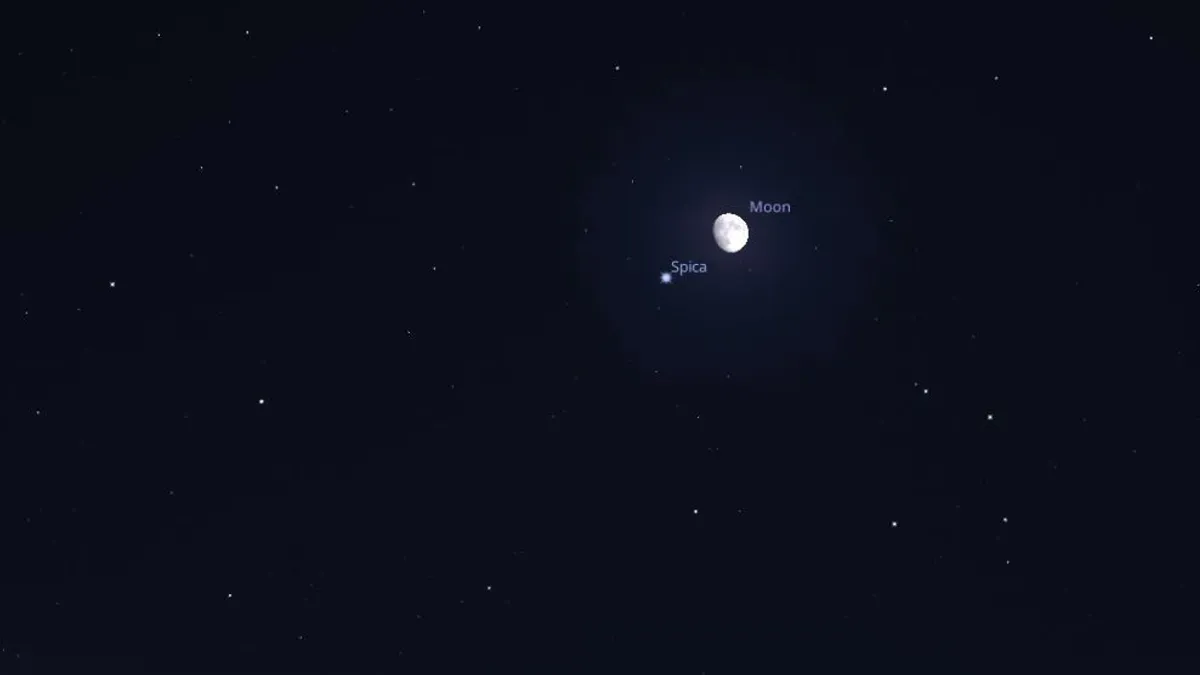As written, as of 10pm on Sunday evening, the closest conjunction of the month visible to the naked eye will occur in the sky, as at this time the Moon will be very close to the brightest star in the constellation Virgo, Spica.
At sunset, Spica will be just six minutes away from the Moon's southern hemisphere, but this proximity will only be observed using a larger 15-20 cm diameter astronomical telescope in bright skies. However, later you can try to see the spike star with the naked eye. The moon will be visible in the southern sky at an altitude of about 30 degrees, and it will be eye-catching and easy to see.
The spike is located 12 arc minutes from the Moon, which is less than half the diameter of the Moon. You will have to look for the faint star to the right of the moon.
By the time it gets completely dark, the celestial phenomenon will be clearly visible even with the naked eye, and with a simple hand-held telescope you will be able to see the moon and star in the same field of view.
Spica is located 250 light-years from Earth and has many unique properties. It is the sixteenth brightest star in the sky. Its average brightness is 1.0, so it can be clearly seen from cities with the naked eye. You can also notice that the star's color is bluish, due to its extremely hot surface temperature of about twenty-five thousand degrees Celsius. However, it surpasses the Sun not only in this respect, but also in size and mass. Its diameter is about eleven million kilometers, and its mass is eleven times greater than the mass of the sun.
Examining the 73% swollen Moon using a small telescope, the Carpathian Mountain Range (Montes Carpatus) can be seen in its central part at the border of light shadow. The length of this mountain range is more than 300 kilometers, and its peaks reach two kilometers. Below you can see one of the most beautiful craters on the Moon, Copernicus.
It is considered a young crater, as it may have formed after an asteroid collision a billion years ago. The central peaks can be seen in the middle of the crater, which has a diameter of about one hundred kilometers, and bright ray bands emanate from the crater.
The Svábhegy Star Observatory also organizes an unusual program on Sunday evening to view the conjunction, after which visitors can also see Copernicus. Details and information about purchasing tickets can be found on the Star Observatory website.












































